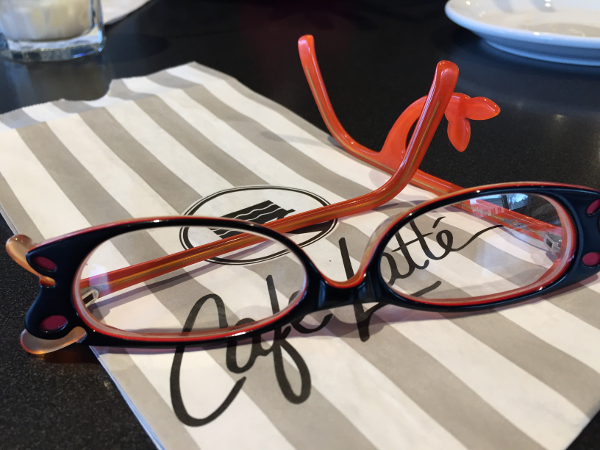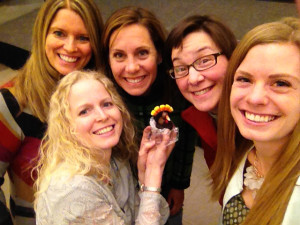You could find children’s book author Trisha Speed Shaskan in a crowd. She’s the “cool glasses” girl. She also has great taste in meeting places and mentors.
My greatest lesson from my second MN SCBWI Writers Mentorship meeting with Trisha Speed Shaskan:
It takes a village to raise a writer. Find a good village.
I’m one of those people who needs leaders to hold the bar for me and make me believe that it’s within reach. We all learn better with a diverse group of people challenging, inspiring, and encouraging. That’s why I was relieved to know that my mentor, too, has mentors.
When I shared with Trisha that I had enrolled in an writing program with Jane Resh Thomas, she almost spit out her tea. I didn’t know it, but Trisha trained under Thomas for four years. In fact, Trisha attended the very same class, the very same time, the very same night of the week. Trisha LOVES Jane. (And, I learned Jane LOVES Trisha.)
When an SCBWI friend mentioned that Jane Resh Thomas workshops were available, I had no intention of attending, thinking I was much too busy. I really had no clue what a big deal these workshops were.
Then one day I checked out my two-week children’s book stack from the library. When I got home, I thought I’d lost my marbles, because I’d selected a picture book that I’d just read. It was Jackie Urbanovic’s DUCK AT THE DOOR. But I read it again anyway. On the copyright page, Jackie wrote: “With Thanks to Jane Resh Thomas, who taught me to write, and to her writing group for so much laughter and support.”
YIKES! I dashed to my computer. Here’s what Hamline University has to say about Jane Resh Thomas:
Jane Resh Thomas, a recipient of the Kerlan Award for contributions to children’s literature, is the author of fifteen published and contracted books, including picture books, short fiction, middle-grade fiction, and biography. The Comeback Dog; Saying Good-Bye to Grandma; Courage at Indian Deep; and Behind the Mask: The Life of Queen Elizabeth I have won, among other honors, a Parent’s Choice Award; Notable Books and Best of the Best listing by the ALA; and a Minnesota Book Award. Her most recent books from Clarion are Blind Mountain, an adventure story, and The Counterfeit Princess, a historical novel.
I couldn’t email Ms. Thomas fast enough. She only had one opening available. I took it.
Before my first class, another friend emailed me a link to an article recognizing Minnesota children’s literature superstar Kate DiCamillo as STAR TRIBUNE’S Artist of the Year. Kate belonged to a writer’s group led by–wait for it–Jane Resh Thomas. That only sweetened the deal.
I’ll have tangible tips from Trisha in the February mentorship post. In the meantime, I hope you’ve found your cheerleading leaders. The reason Trisha is such a fabulous mentor (besides all the talent, personality, and humility, of course) is that she comes from a fabulous village and she’s a fabulous mentee.




